A 1-6x can do everything that a 1-4x can do and more.
But with more capability from the 1-6x scope comes more weight and cost. Is it worth it for what you intend to do?
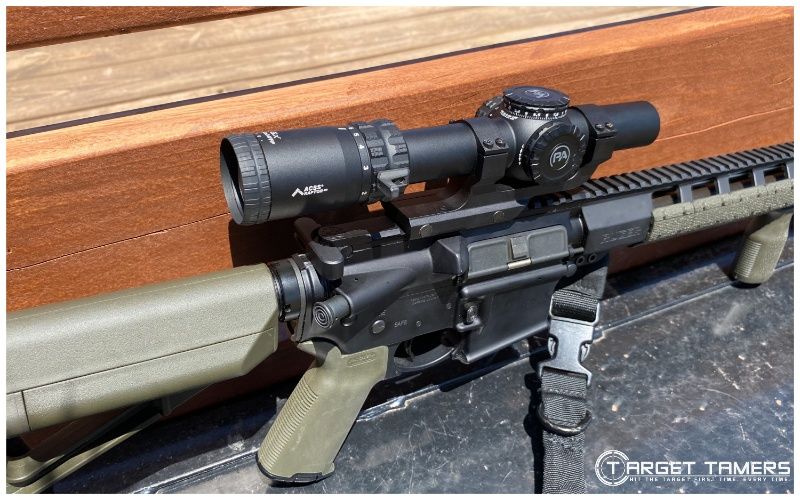
Overall, the preference for a 1-4x or a 1-6x scope comes down to personal bias, application, effective range, visual acuity, and more. However, glass, durability, reticle, and ease of use will vary between LPVOs as it's less about configuration and more about being scope and manufacturer specific.
Knowing the capabilities and limitations of a 1-6x and 1-4x scope will help narrow down which is best for you.
Why Trust Us?
After hundreds of hours of hand-testing scopes in the field and at the range, and thousands more hours researching and writing about them, we feel we earn the title of experts when it comes to optics!
We purchase as many of the optics for our tests as possible, and run them through their paces to make sure they will perform at the range and in the field.
Our combined decades of experience from shooting in various applications, mounting and sighting them in to sequential comparisons with our extensive inventory has been integral in putting together this comparison guide of 1-4x VS 1-6x scopes .
Get the inside scoop on how we test optics here.
1-4x VS 1-6x LPVO
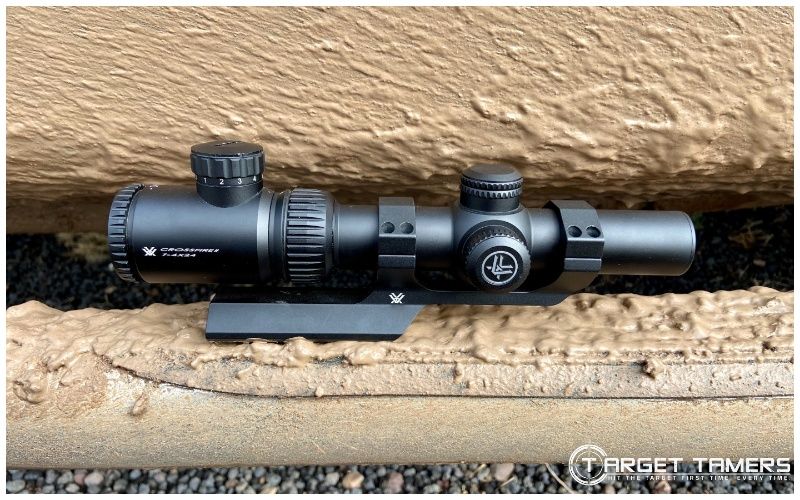
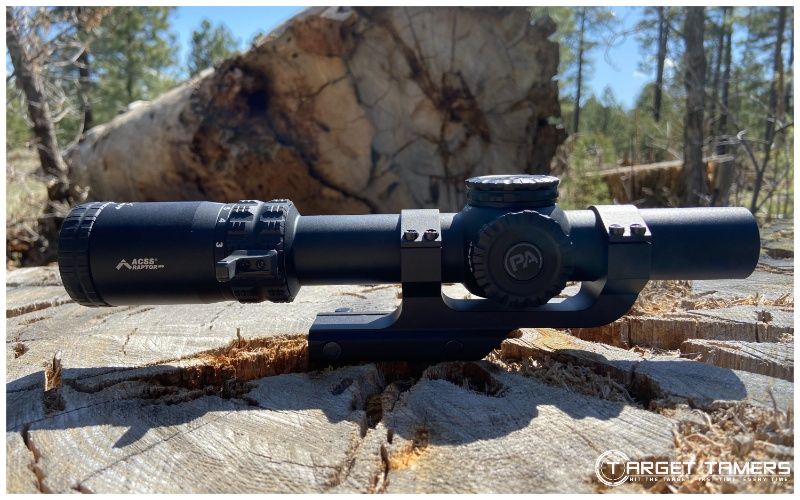
In general, there’s a lot of similarities between a 1-4x and a 1-6x scope. They’re both LPVO scopes with 1x performance, so there will be similar field of view, eye relief, and exit pupil specs.
Additionally, every scope will be different between manufacturers, so features such as glass, size, included accessories like throw levers, etc. will vary.
This greatly narrows down what can be fairly compared. This comparison guide focuses on the primary differences that you must know if you’re tossing up the idea of a 1-4x VS a 1-6x scope. However, I will include some specific scope examples to provide comparisons.
Also, the suggested ‘winners’ are but suggestions. Honestly, there’s an argument for either or in each category.
However, the discussion might help to narrow down some important factors you may want to consider.
Cost
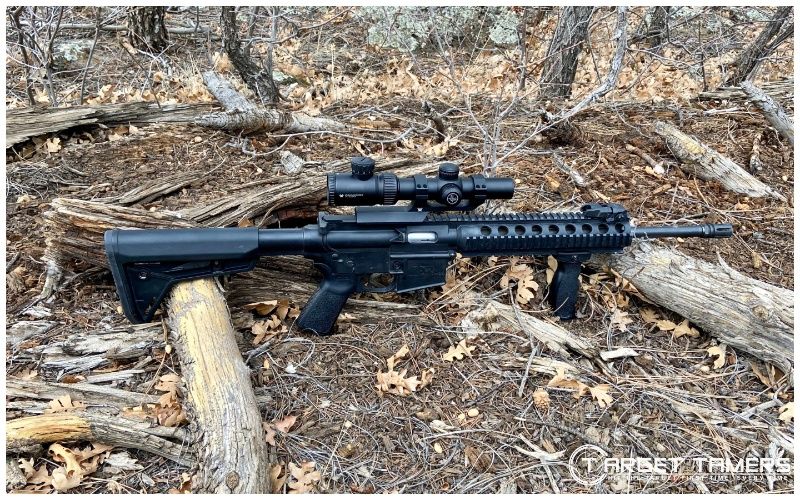
On average, a 1-4x scope will be cheaper than a 1-6x scope. The added magnification of the 1-6x makes it slightly more expensive than a 1-4x. Yet, there’s a lot more to do with overall cost than just magnification alone.
For example, I’d take a quality 1-4x scope, even though it costs more, over a budget 1-6x scope.
Though it has less magnification, it will have better glass quality, more durable moving parts, and better 1x performance with less fisheye.
But if we’re comparing base costs alone, the 1-4x LPVO is generally going to be cheaper than a 1-6x. The cheapest 1-4x scopes can be found for under $100 while the starting costs for a 1-6x scope will typically be around $150.
Winner: 1-4x
| Product | Configuration | Price Range |
|---|---|---|
| Leupold Competition VX-4.5HD | 1-4x24 | Under $1500 |
| Steiner P4Xi | 1-4x24 | Under $1000 |
| Primary Arms GLx FFP | 1-6x24 | Under $600 |
| Vortex Crossfire II | 1-4x24 | Under $200 |
| Monstrum Alpha | 1-6x24 | Under $150 |
Quality
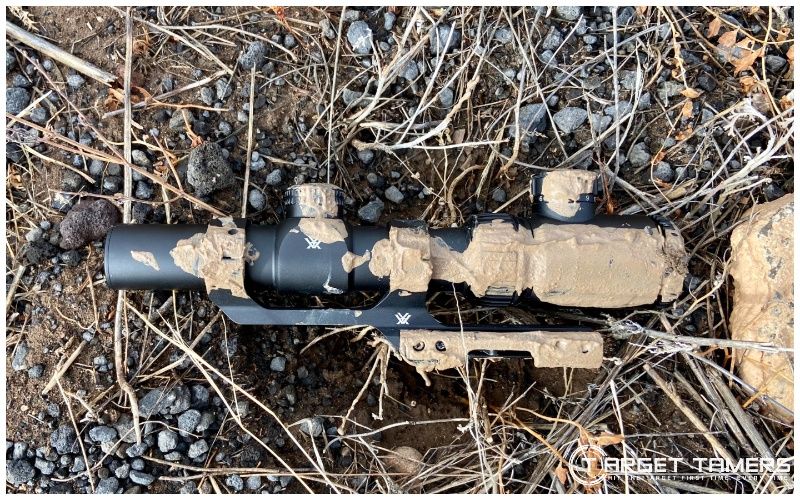
This is a difficult category to compare as it’s not about whether the scope is a 1-4x or a 1-6x. This has everything to do with the scope itself, what it’s made with, and its fundamental performance. Some would even say that it has a lot to do with where it’s made.
From glass and precision laser-etched reticles to the waterproofing, durable parts, and zero retention, there’s a lot that can be considered.
As a whole, this really can’t be compared without specific scopes to highlight contrasting features.
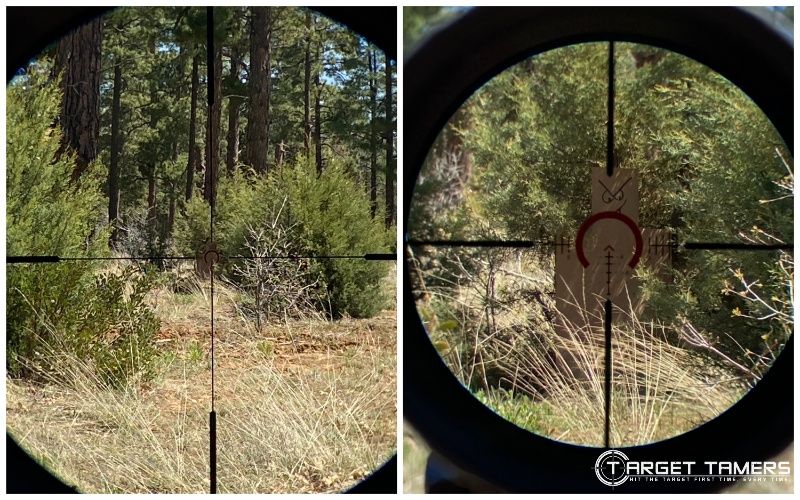
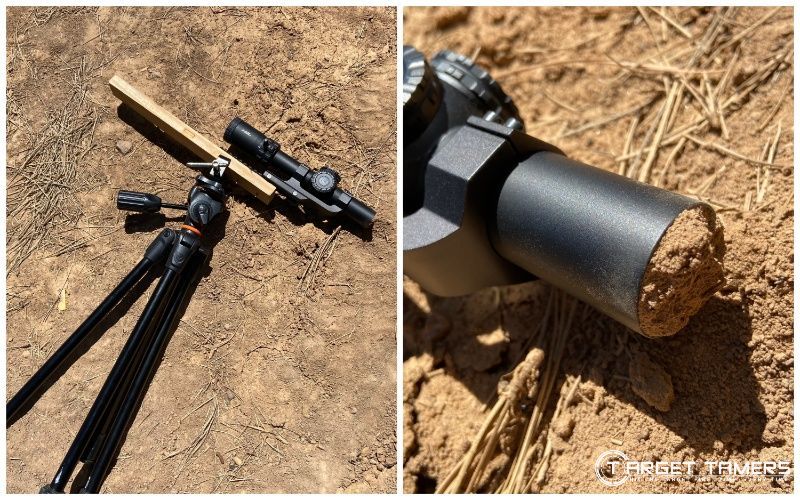
For extreme examples, you can have a high-end 1-4x scope such as the Leupold Competition VX-4.5HD 1-4.5x24 scope with the Professional-Grade Optical System, CDS, and zero stop that costs over $1000.
Then there’s the Vortex Crossfire II 1-4x24 scope that costs about $200 with great durability but poor illumination for daylight use and soft adjustments.
To compare quality, it will require specific research of 1-4x and 1-6x scopes that you want to consider.
Winner: Tie
| Product | Configuration | Features |
|---|---|---|
| Leupold Competition VX-4.5HD | 1-4x24 | Professional-grade optical system, zero stop, CDS compatible, made in USA |
| Steiner P4Xi | 1-4x24 | Excellent optics, extremely durable, 100-yard fixed parallax, made in USA |
| Primary Arms GLx FFP | 1-6x24 | Mil scope, FFP reticle, ACSS Raptor M6 reticle, AutoLive, long eye relief |
| Vortex Crossfire II | 1-4x24 | V-Brite reticle, 1.5 MOA floating dot, truly waterproof, VIP warranty |
| Monstrum Alpha | 1-6x24 | Price, FFP reticle, illumination, flip-up caps included, fog/waterproof |
Magnification/Power
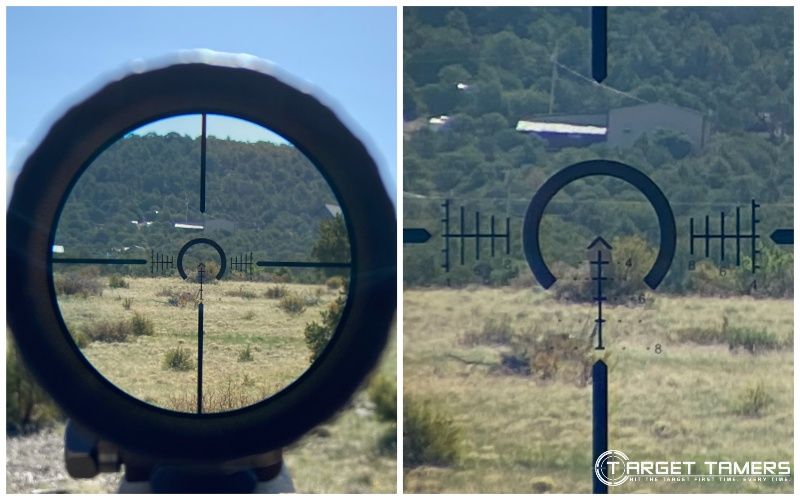
You don’t need a lot of magnification to reach out to 200, 300 yards or so, but there’s no argument that a bit more magnification can make it a whole lot easier.
However, quality glass helps to maintain adequate resolution and focus at max power to observe, ID your target, and make precision shots.
Any optical aberrations that exist at 1x will be magnified with more power. In theory, with a low power range, the 1-4x should have less optical issues, but that’s not always the case is it?
Once again, it comes down to other factors such as quality glass, forgiving eye boxes at max power, fisheye tolerance, and more. Again, it’s less about the configuration and more to do with quality.
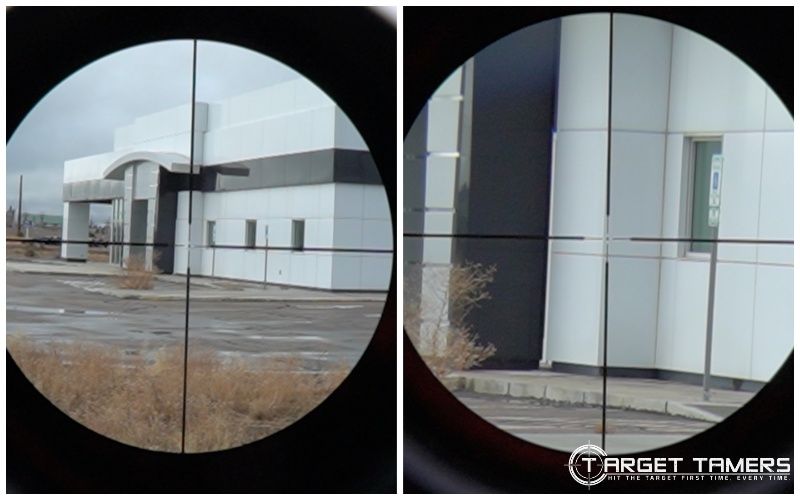
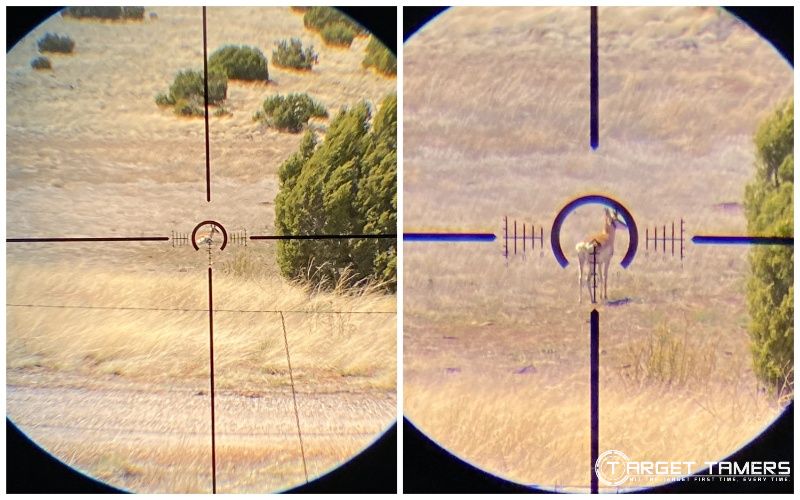
Back to the point though, if it’s about the magnification range alone, I hear more complaints about not having enough power with a 1-4x. I am yet to hear about having an excess of magnification with a 1-6x.
However, the extra 2x magnification does come with additional weight, but we’ll discuss that soon. For right now, having up to 6x power is a benefit and anytime you don’t want that much, just crank it down. A 1-4x doesn’t have the option of cranking up a little bit more even when you want or need it.
To read more about how much magnification you might need, stalk on over to our Riflescope Magnification guide.
Winner: 1-6x
| Product | Magnification | Objective Lens Size |
|---|---|---|
| Geiselle Super Precision | 1-6x | 26 mm |
| Vector Continental | 1-6x | 28 mm |
| Primary Arms GLx FFP | 1-6x | 24 mm |
| Vortex Crossfire II | 1-4x | 24 mm |
| Barska SWAT IR | 1-4x | 28 mm |
| Monstrum | 1-4x | 20 mm |
Effective Range
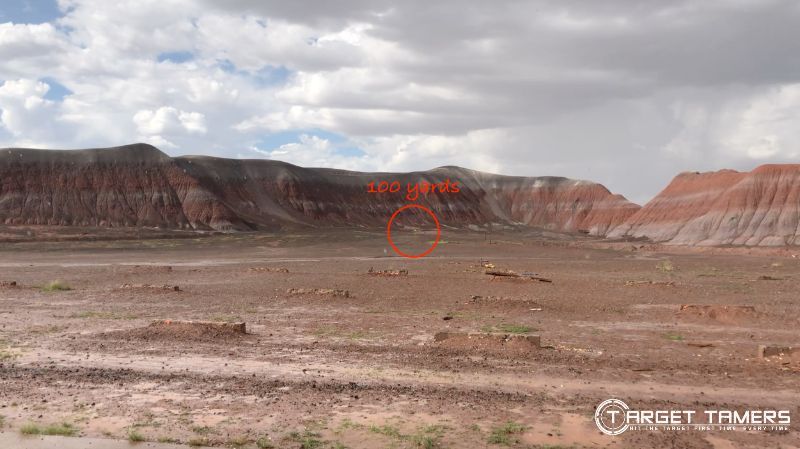
Generally, it’s better to determine at what ranges you’re shooting at and with what caliber. If you’re going long-range to 1000 yards and more with a 6.5 Creedmoor, then a 1-4x or 1-6x is probably not for you. LPVO scopes are generally designed for close to mid-range shooting inside 800 yards.
Even with that generous 800-yard number, I’d say the effective range of a 1-4x and 1-6x scope is inside 500 yards. It also depends on what your zero distance is as well.
For example, the Steiner P4Xi with the P3TR reticle has holdovers out to 600 yards with the 5.56mm and 7.62mm calibers and a 200-yard zero.
For me, I’m getting almost 700 yards with that last holdover. These will change if you have a different zero and are shooting a different caliber of course.
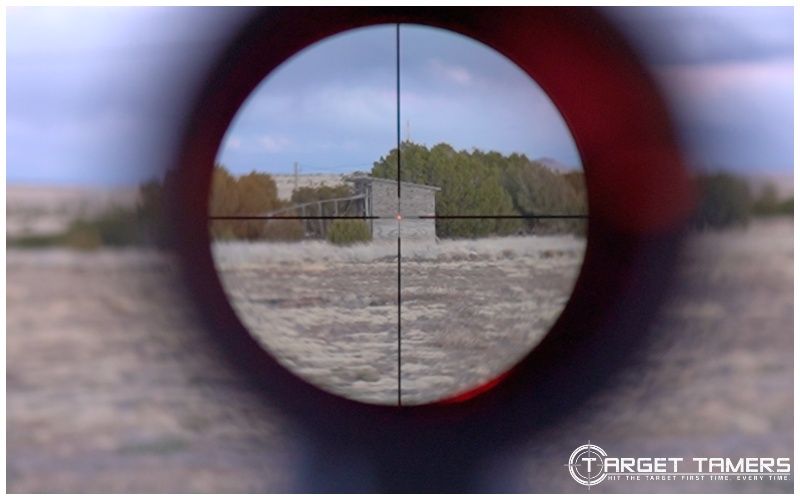
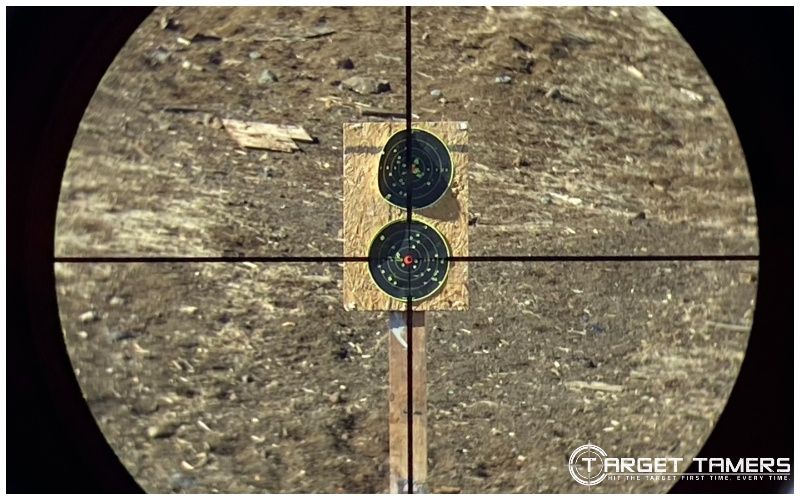
With 1-4x magnification with, say, 1x magnification for every 100 yards, you could take it out to 400 yards with that concept.
However, I’d say 25-200 yards is more appropriate for the 1-4x based off duplex reticles, fixed parallax distances, average visual acuity, and ordinary shooting abilities.
With the 1-6x scope on the same 1x power for 100 yards, you could take it out to 600 yards. Realistically for most people, including myself, I’d say the effective range of a 1-6x is more like up to 300 yards. You don’t need much to hit steel at 300 yards, but it’s nice to have at least 2x power for every 100 yards.
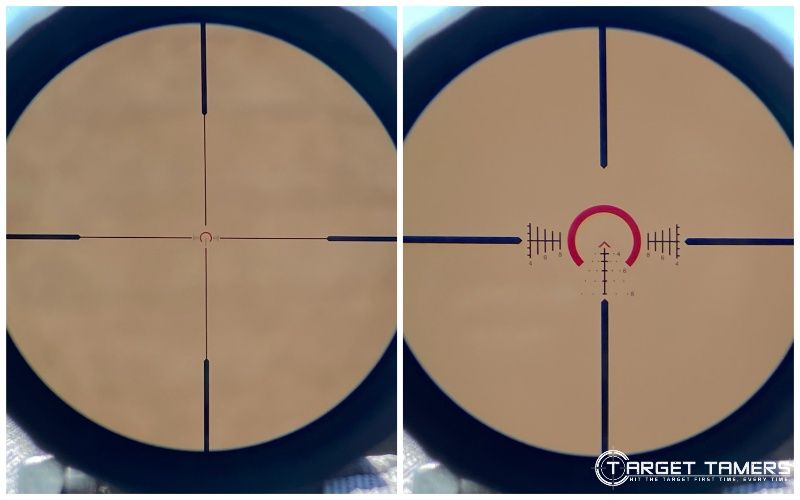
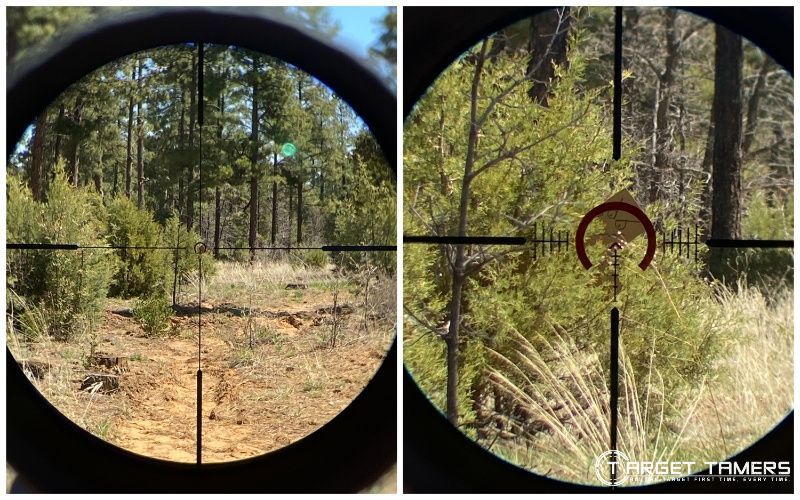
To go further, a BDC reticle will help for fast holdovers and knowing your dope will go a long way when those long shots present themselves.
But I’d say that a 1-4x and 1-6x is mostly for that in-between work to fill the gap between a red dot sight and a magnified scope, so anywhere between 0-150 yards to 300 yards max in my opinion.
For most CQB applications, the low magnification is excellent for inside 100 yards. For tactical work, 1x is customary for clearing buildings, tight spaces, and awkward positions. For the fleeing target between 25-80 yards, it’s nice to have some magnification for precision.
It's clear that a little more power gives you a bigger sight picture that can help to extend the effective range.
Winner: 1-6x
| Product | Configuration | Reticle Type | Effective Range* |
|---|---|---|---|
| Leupold VX-6HD | 1-6x24 | Illuminated Firedot (Duplex) | 0-600 yards |
| Primary Arms GLx FFP | 1-6x24 | ACSS Raptor M6 (BDC) | 0-800 yards |
| Monstrum Alpha | 1-6x24 | Custom Type-C (BDC) | 0-400 yards |
| Steiner P4Xi | 1-4x24 | P3TR (Duplex) | 0-600 yards |
| Vortex Crossfire II | 1-4x24 | V-Brite (Duplex) | 0-200 yards |
*Approximation.
Exit Pupil, Eye Relief & FOV
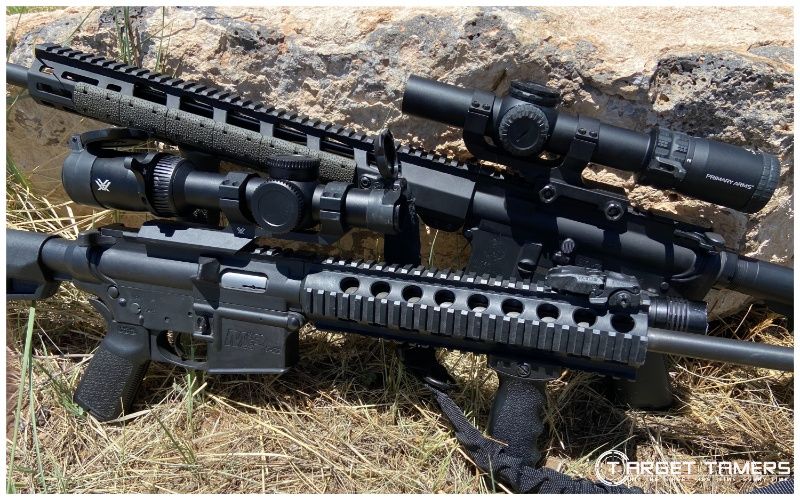
The exit pupil, eye relief, and field of view specifications are going to vary by scope. Some things will be similar if the configuration is the same such as the exit pupil. However, 1-4x and 1-6x scopes can have different objective lens diameters which will affect the exit pupil.
If all things were the same, say a 24mm objective lens, the exit pupil of a 1-4x and 1-6x scope at 1x will be 24mm. The differences will be seen in higher power ranges. At 4x on a 1-4x scope, it’s 6mm, and at 6x on a 1-6x scope, it’s 4mm.
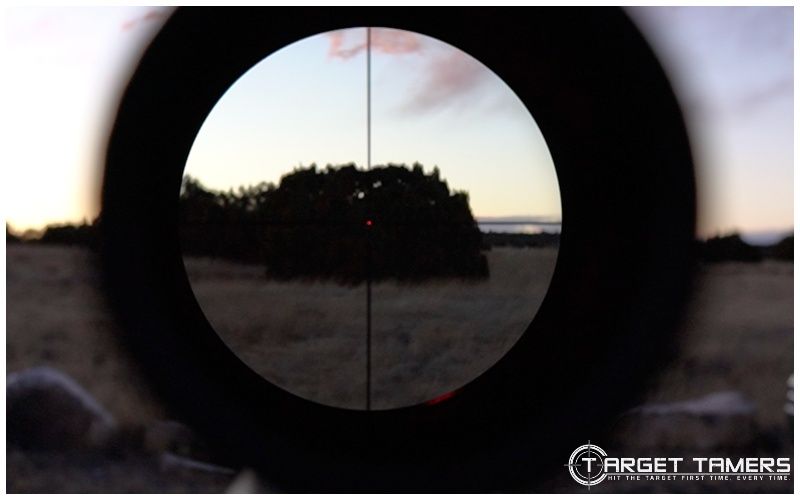
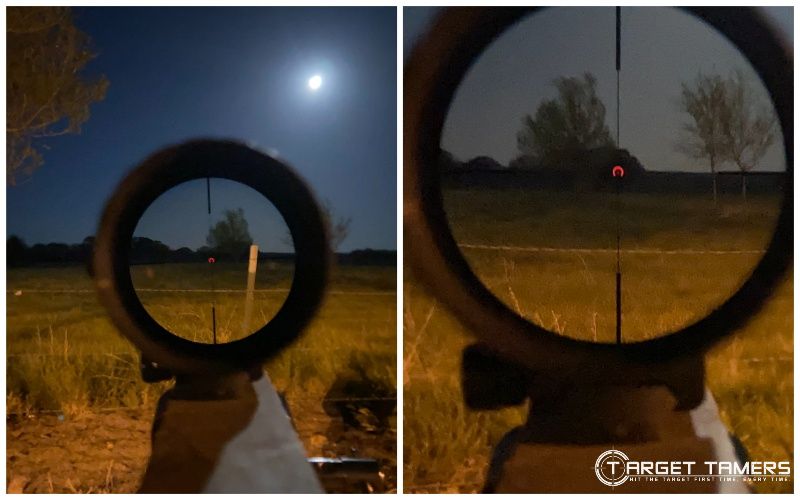
If all things were equal in glass and coating quality, the 1-4x scope will be slightly brighter and clearer in low light conditions due to the larger exit pupil allowing the human pupil to perceive as much light as possible.
On a 1-6x, the magnification would need to be reduced to 4x power in order to provide the same image quality as the 1-4x scope.
From 1-3x magnification, the exit pupil is of less consequence as there’s more light than what the human eye can use anyway.
Now the eye relief will vary from scope to scope. In my experience, many LPVO scopes tend to have generous eye relief at 1x often around 4” though I’ve personally measured around 4.5-5”. At max power, the eye relief is still more than adequate at around 3.5-4”. The issue is in the eyebox.
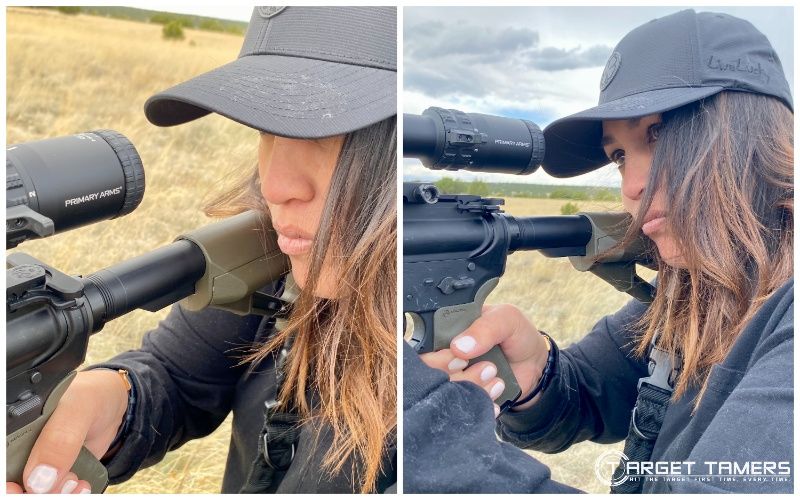
A common complaint with LPVO scopes in general is the tight eyebox at max magnification– the sweet spot that your eye needs to be in alignment with the optical plane of the scope to remove parallax and see the sight picture free of optical aberrations.
Any slight movement and you might see glare and reflections, vignetting (shadows), and other unsavory optical irregularities.
Unfortunately, this is a common theme with both 1-4x and 1-6x scopes. One possible solution is to opt for a scope that has a bit more magnification than what you actually intend to use.
For example, if you will sit at max 4x power more than 50% of the time, you should consider a 1-6x. Theoretically, you should be able to sit more comfortably at 4x with a 1-6x since you’re not technically maxing out the optical capabilities of the 1-6x scope.
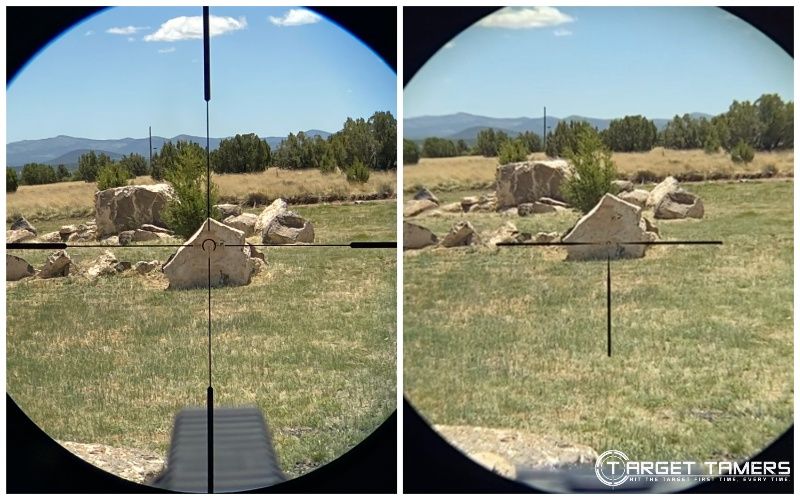
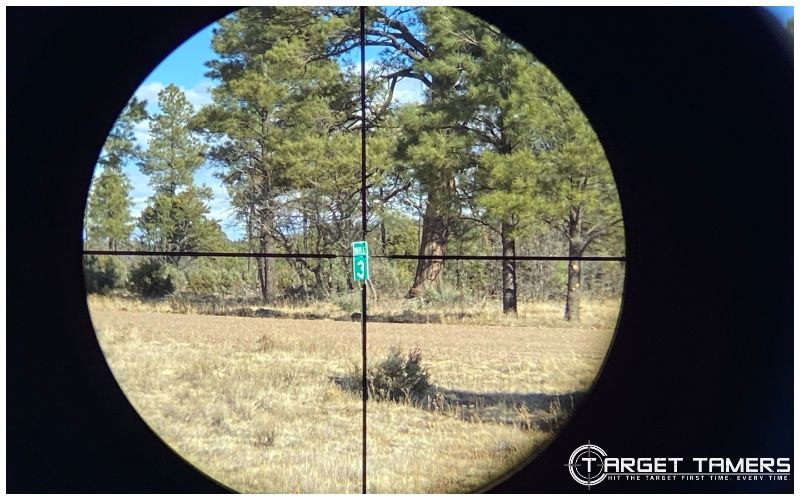
Thirdly, the field of view. This is scope specific. It will be different not only between 1-4x and 1-6x scopes but also between scopes with the same configuration. Thus, I can’t fairly compare this specification in general between 1-4x and 1-6x scopes.
Since these specifications vary and are specific to a single scope, they will be details you need to take note of during your research. For this reason, the 1-6x and 1-4x come to a draw.
Winner: Tie
| Product | Configuration | Exit Pupil | Eye Relief | Field of View (@ 100 yards) |
|---|---|---|---|---|
| Leupold VX-6HD | 1-6x24 | 24-4 mm | 3.8-3.7” | 123.2-26.2 ft |
| Primary Arms GLx FFP | 1-6x24 | 24-4 mm | 3.5-3.3”* | 104.7-18.3 ft |
| Monstrum Alpha | 1-6x24 | 24-4 mm | 4.5-4” | 103.2-16.1 ft |
| Steiner P4Xi | 1-4x24 | 24-6 mm | 4-3.5” | 110-27.5 ft |
| Vortex Crossfire II | 1-4x24 | 24-6 mm | 4”* | 96.1-24.1 ft |
*Hands-on testing measured eye relief between 5-4”.
Size/Weight
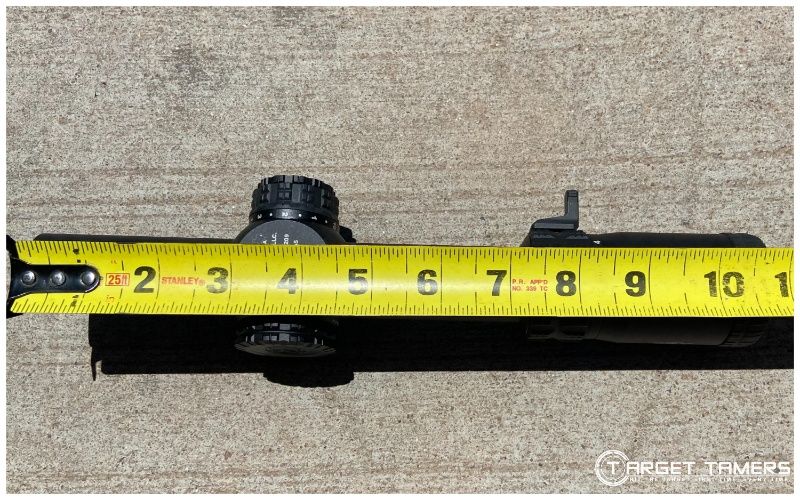
On average, a 1-6x scope is heavier and larger than a 1-4x. The magnification assembly adds weight as do other features such as illumination, additional glass lenses, parallax correction, sunshades, etc. However, there are some 1-6x scopes where the additional weight is practically a non-issue.
Generally, the 1-4x may be more compact and lighter than higher-powered LPVOs, but there are always those exceptions. Not everything is equal and sometimes a 1-6x can come in lighter than a 1-4x. Check out the dimensions on these scopes to see how they compare.
Winner: 1-4x
| Product | Configuration | Length | Weight |
|---|---|---|---|
| Leupold VX-6HD | 1-6x24 | 10.8” | 16.2 oz |
| Primary Arms GLx FFP | 1-6x24 | 10.25” | 21.3 oz |
| Monstrum Alpha | 1-6x24 | 9.4” | 14 oz |
| Steiner P4Xi | 1-4x24 | 10.3” | 17.3 oz |
| Vortex Crossfire II | 1-4x24 | 9.61” | 14.8 oz |
For Duty-Use
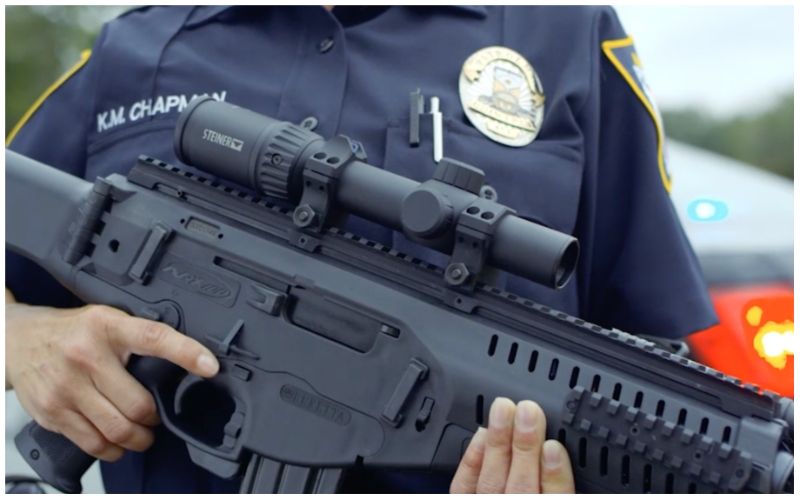
More and more LE agencies are expanding their policies to include various optics for patrol firearms. On rifles, some LEOs are moving from the red dot and magnifier to an LPVO or are maybe considering an LPVO for a second or subsequent rifle.
Between a 1-4x and a 1-6x, I would think that the 1-4x would be appropriate for the task. For most tactical work, the 1x would be the most used power setting but there’s still extra magnification to improve target ID and distance shots for perimeters, moving targets, etc.
The more compact size and light weight might also prove to be beneficial on a duty firearm and might ‘fit’ better in the mount in a patrol vehicle.
Though other factors must be considered such as cost, glass quality, and reticle choice, I think keeping the power range low with a 1-4x isn’t a bad idea.
Winner: 1-4x
| Product | Configuration | Price Range |
|---|---|---|
| Steiner P4Xi | 1-4x24 | Under $1000 |
| Trijicon Accupoint TR24 | 1-4x24 | Under $1000 |
| OP Eclan Specter DR | 1-4x32 | Under $2500 |
| EOTech Vudu FFP | 1-6x24 | Under $1500 |
| Leupold Patrol 6HD | 1-6x24 | Under $1500 |
For AR-15
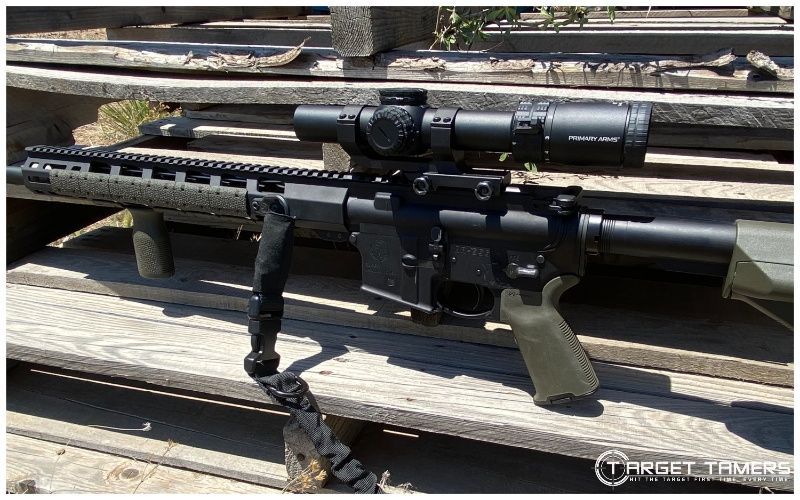
Overall, either a 1-4x scope or a 1-6x scope is appropriate for sitting atop an AR-15. Considering the effective ranges of the 1-4x and 1-6x scopes, they are both suited to CQB engagements as well as out to 300 yards or more.
For most casual and recreational applications like target shooting, plinking, and training, a 1-4x would be a cost-saving optic to consider. But if money and a little bit of weight is not an issue, you can’t go wrong with a little more magnification that you can get with a 1-6x.
For professional applications, I’d say it has more to do with quality than the configuration. While 1-4x may be enough for the LEO, a match shooter may prefer the 1-6x. Someone on a budget that’s just looking for fast engagement for inside their house and around the property would be fine with a 1-4x.
At this point, it’s really personal preference and what you want out of your scope.
For more options, check out our Best Scopes for AR-15 guide!
Winner: Tie
| Product | Configuration | Price Range |
|---|---|---|
| Firefield RapidStrike | 1-6x24 | Under $150 |
| Primary Arms SLx SFP | 1-6x24 | Under $300 |
| Steiner P4Xi | 1-4x24 | Under $1000 |
| Trijicon Credo SFP | 1-6x24 | Under $1000 |
| Leupold Mark3HD | 1.5-4x24 | Under $1000 |
For Hunting
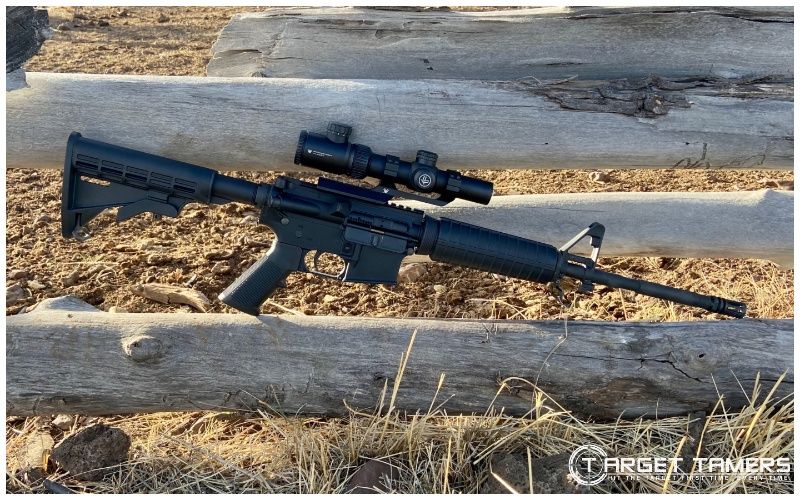
In general, the optical quality, durability, and reticle type of the scope will be the best way to judge if a 1-4x or a 1-6x scope is best for hunting. On paper, the 1-4x with a duplex reticle could do better at max power in lowlight conditions.
The 1-4x is suitable for timber, mountain brush, and where shots are inside and around 150 yards. It could prove suitable for dangerous game, big game, predator, and small game hunting.
The 1-6x would be at home in the same conditions for the same kind of hunts and does allow for a little bit more range with the right reticle. You’d need to halve the magnification to 3x to get the same image quality as a 1-4x in lowlight conditions if all else (glass and coatings, etc.) were equal.
If using a BDC reticle in the SFP, you’d need to max out magnification for accurate holdovers. Between 4x and 6x magnification, this might not seem like much of a difference. However, at 4x it will be a little better as far as holding a steady position and maintaining a wide FOV especially for follow-up shots.
When it comes to weight, paying attention to this spec should also be a deciding factor. Many 1-4x scopes are lighter than 1-6x scopes but not all. Add to that a mounting system and anything else you might throw on your deer rifle and carrying it all day is certainly something to think about.
Though this could go either way, and I think a 1-4x scope is enough for a hunt. Yes, you could go with 1-6x scopes and even 1-8x scopes or 1-10x LPVO for the job. But if up-close engagements are high potentials for the terrain and conditions where tracking and keeping both eyes open are important, you don’t need to over-scope your hunting rifle.
Winner: 1-4x
| Product | Configuration | Price Range |
|---|---|---|
| Steiner P4Xi | 1-4x24 | Under $1000 |
| Leupold VX-Freedom Pig Plex | 1.5-4x24 | Under $300 |
| Primary Arms GLx FFP | 1-6x24 | Under $600 |
| Zeiss Conquest V6 | 1-6x24 | Under $2000 |
For Competition Shooting
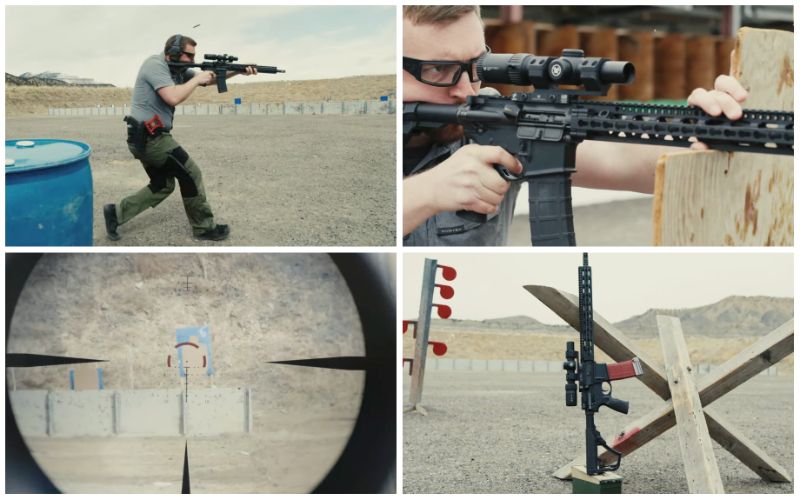
The extra magnification of a 1-6x over a 1-4x scope may prove to be needed in various competition matches. Though there’s the debate over red dots with magnifiers, LPVO with a micro red dot, and mid-powered scopes for competitive shooting, the 1-6x offers a bit more power versatility than the 1-4x.
Winner: 1-6x
| Product | Configuration | Price Range |
|---|---|---|
| Vortex Razor Gen II-E | 1-6x24 | Under $2500 |
| Vortex Viper PST | 1-6x24 | Under $1000 |
| Athlon Helos BTR | 1-4.5x24 | Under $500 |
| Leupold Mark 3HD | 1.5-4x24 | Under $300 |
1-4x VS 1-6x LPVO Pros & Cons
1-4x Scope Pros & Cons
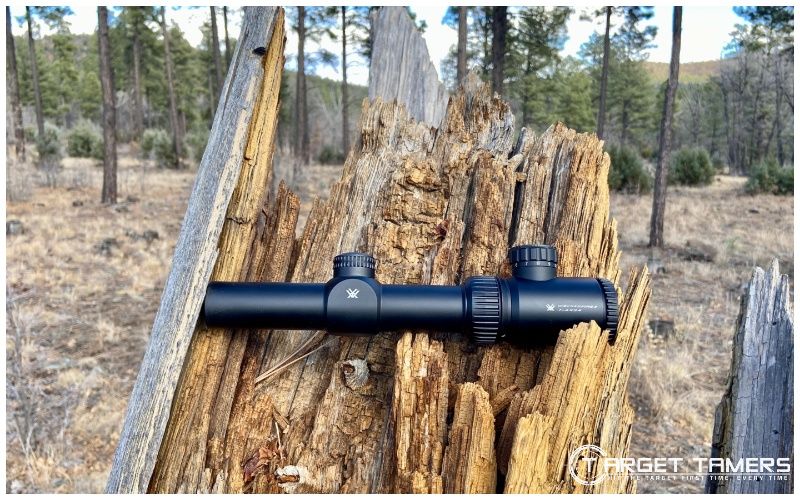
Pros:
- Less expensive
- Lightweight/compact
- Excellent for CQB
- Best for duplex reticles
- Simple & fast to use
Cons:
- Only up to 4x magnification
- Some scopes might not be much different in weight & size than a 1-6x
1-6x Scope Pros & Cons
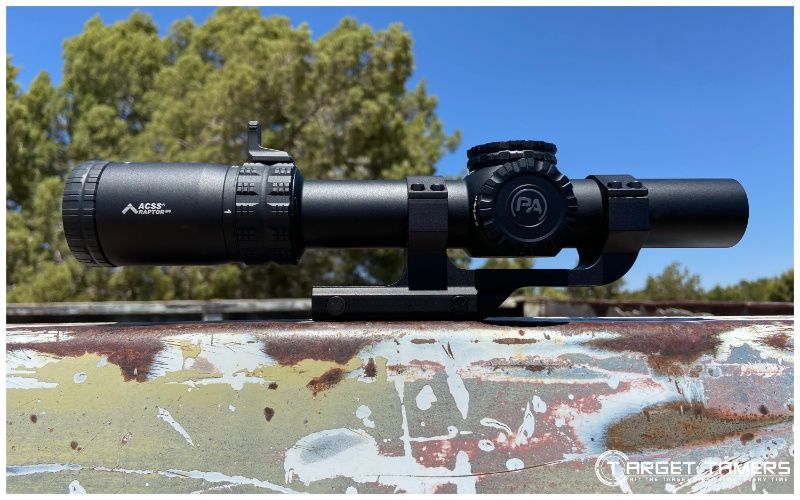
Pros:
- Up to 6x magnification
- Excellent for CQB
- Possibly longer effective range
- Better with BDC reticles
- Likely the better option for competition
Cons:
- More expensive starting price
- Likely to be heavier and longer than a 1-4x
Is a 1-4x or 1-6x Right for You?
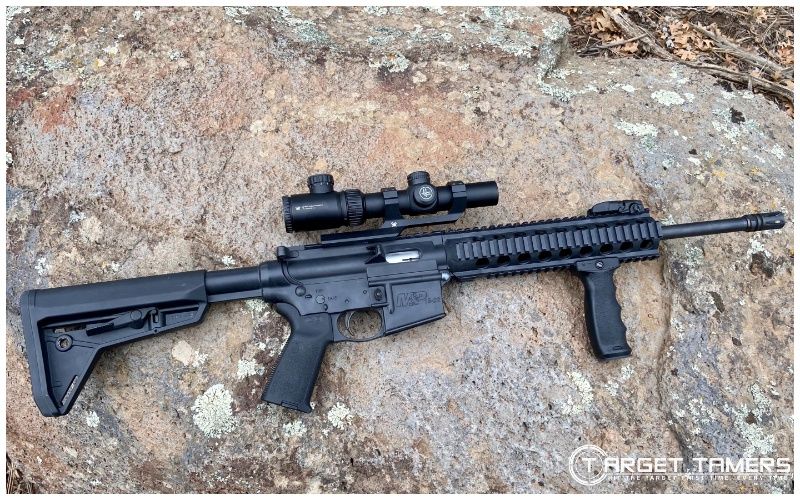
In general, a 1-6x scope will do everything a 1-4x can, and most of the time it’s with very little consequence in weight, length, field of view, etc. A 1-6x starts at a more expensive price point than a 1-4x but not at too much of a difference where the extra 2x magnification isn’t worth it – it is.
I think the real differences between these two scopes won’t be between whether it’s a 1-4x or a 1-6x but rather in the quality differences. Both LPVO scopes have downsides such as poor battery runtimes, they’re generally heavy, they’re limited with range, and most tend to have some sort of fisheye at 1x.
Getting a scope with the appropriate reticle, a comfortable eye box, optical quality that provides clear and sharp focus, and more features that are best suited to you will be the way to make the best decision between the two scopes.
Further Reading



